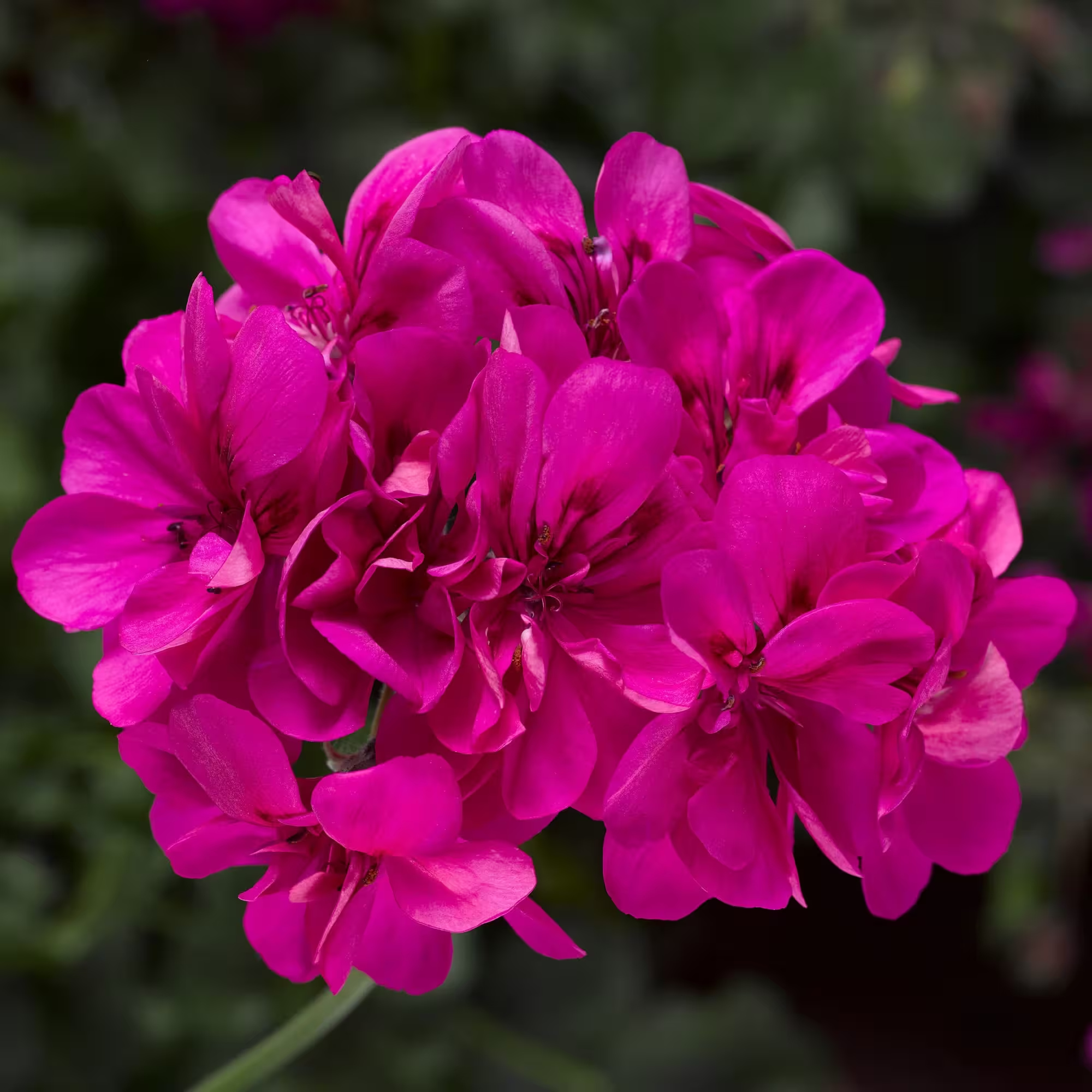
Deep Pink Geranium
Botanical Name
:
Pelargonium peltatum/Pelargonium x hortorum ‘Tango Deep Pink’
Plant Type
:
Vegetative annual
Seasons
:
Late Spring, Summer, Late Summer
Sun Level
:
6–7 hours of sunlight a day
Soil Type
:
Well-draining soil.
Germination
:
Deep pink geranium seeds take 3–21 days to germinate
P.H. Level
:
6.0–6.5
Water/Irrigation
:
Irrigate when the top inch of soil looks/feels dry.
Fertilization
:
Use water-soluble fertilizer for the first 3 weeks (the growing season) then reduce fertilization in late summer.
Habit
:
Semi-trailing
Final Plant Height
:
12–16 inches
Spread
:
20–24 inches
Spacing
:
12–18 inches apart to allow for trailing growth.
Flowers
:
Deep pink/rose flowers
Attracts
:
Hummingbirds, bees, butterflies, and other pollinating insects.
Uses
:
Border edging, hanging plants, container planting, ground cover, and mass planting.
Companions
:
Lobelia, bacopa, calibrachoa, petunias
Pruning
:
Pinch growing tips to encourage branching and remove dead flowers to continue blooming.
Toxicity
:
While humans can consume edible geraniums, geraniums are toxic to cats, dogs, and horses.
Pests
:
Beware of aphids, whiteflies, and spider mites.
Botanical Name
:
Pelargonium peltatum/Pelargonium x hortorum ‘Tango Deep Pink’
Plant Type
:
Vegetative annual
Seasons
:
Late Spring, Summer, Late Summer
Sun Level
:
6–7 hours of sunlight a day
Soil Type
:
Well-draining soil.
Germination
:
Deep pink geranium seeds take 3–21 days to germinate
P.H. Level
:
6.0–6.5
Water/Irrigation
:
Irrigate when the top inch of soil looks/feels dry.
Fertilization
:
Use water-soluble fertilizer for the first 3 weeks (the growing season) then reduce fertilization in late summer.
Habit
:
Semi-trailing
Final Plant Height
:
12–16 inches
Spread
:
20–24 inches
Spacing
:
12–18 inches apart to allow for trailing growth.
Flowers
:
Deep pink/rose flowers
Attracts
:
Hummingbirds, bees, butterflies, and other pollinating insects.
Uses
:
Border edging, hanging plants, container planting, ground cover, and mass planting.
Companions
:
Lobelia, bacopa, calibrachoa, petunias
Pruning
:
Pinch growing tips to encourage branching and remove dead flowers to continue blooming.
Toxicity
:
While humans can consume edible geraniums, geraniums are toxic to cats, dogs, and horses.
Pests
:
Beware of aphids, whiteflies, and spider mites.

